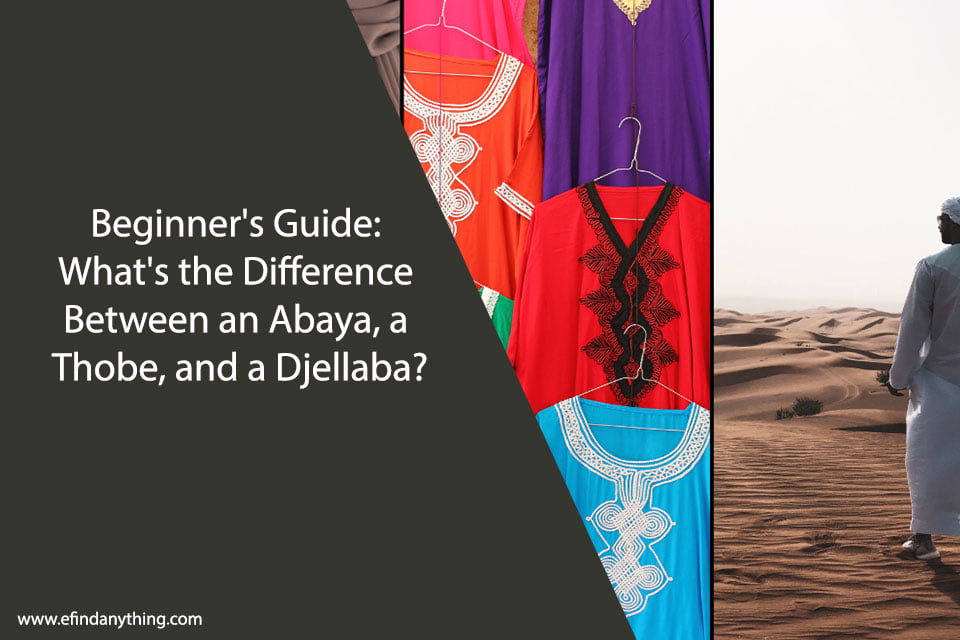
Table of Contents
Unveiling Islamic Garments: Abaya vs. Thobe vs. Djellaba
The world of Islamic clothing offers a variety of garments that embody faith and modesty. While the abaya is a familiar term for many, you might encounter other garments like the thobe and djellaba. This beginner’s guide will explore the key differences between these traditional pieces, helping you understand their unique styles and purposes.
The Abaya: A Symbol of Modesty
The abaya is a loose, robe-like garment typically worn by Muslim women. It covers the entire body from head to toe, with the exception of the face, hands, and sometimes the feet. Abayas come in various styles, materials, and colors, offering a range of options for personal preference and cultural context.
The Thobe: A Garment for Men
Unlike the abaya, the thobe is a long, loose robe specifically worn by Muslim men and boys. It can be ankle-length or reach the ground and often features long sleeves. Thobes come in various regional styles, with some featuring embroidery or other embellishments.
The Djellaba: A Versatile Garment for All
The djellaba is a loose-fitting garment with a hood, traditionally worn by both men and women in North Africa and some parts of the Middle East. It can vary in length, reaching the ankles or knees, and often features a pointed hood and wide sleeves. Djellabas can be made from various materials and are known for their comfort and practicality.
In Conclusion
While all three garments share some similarities in terms of loose silhouettes and cultural significance, the abaya is specifically designed for women, the thobe for men, and the djellaba can be worn by both. Understanding these distinctions can help you appreciate the rich diversity of Islamic clothing traditions.





